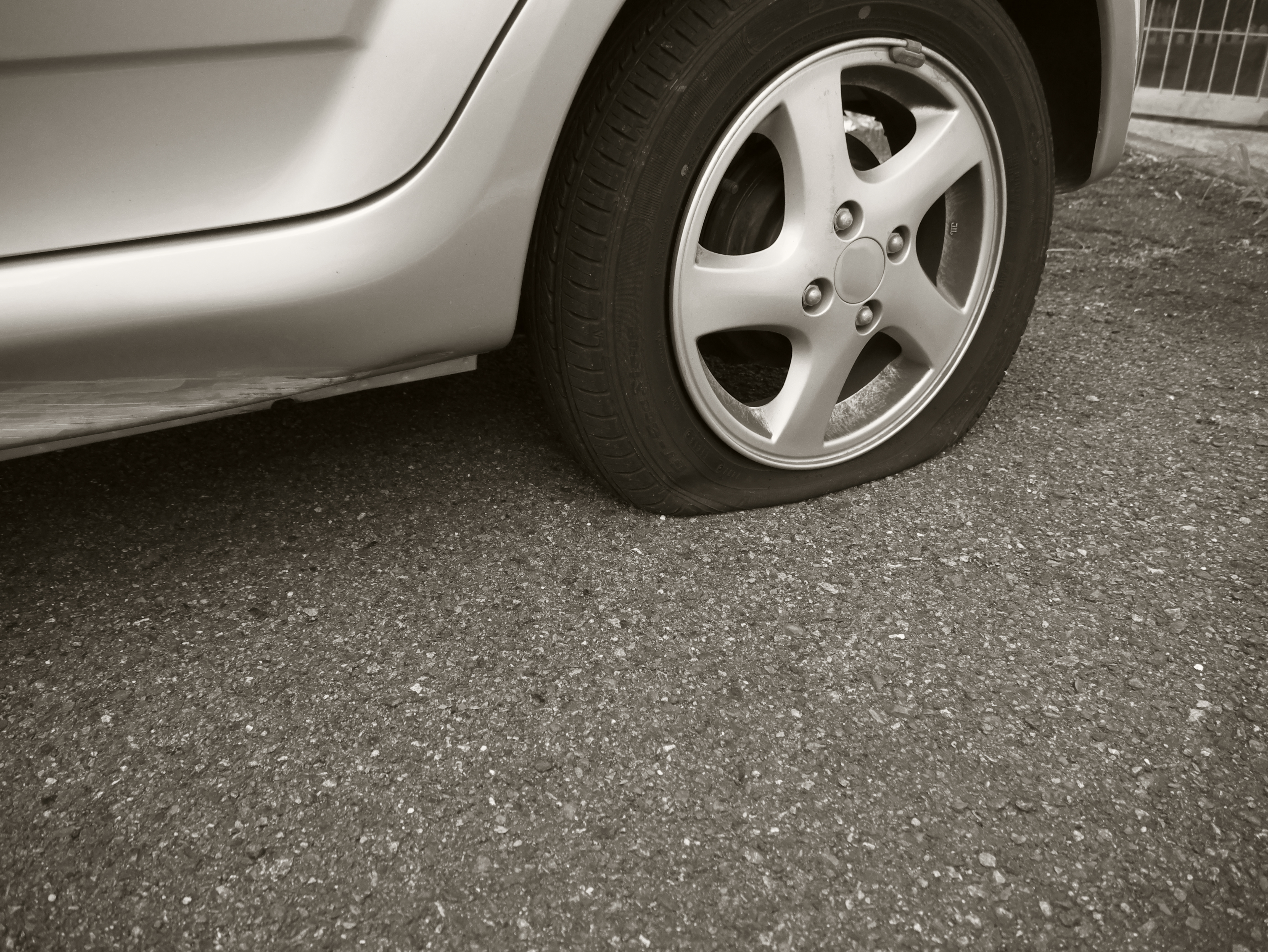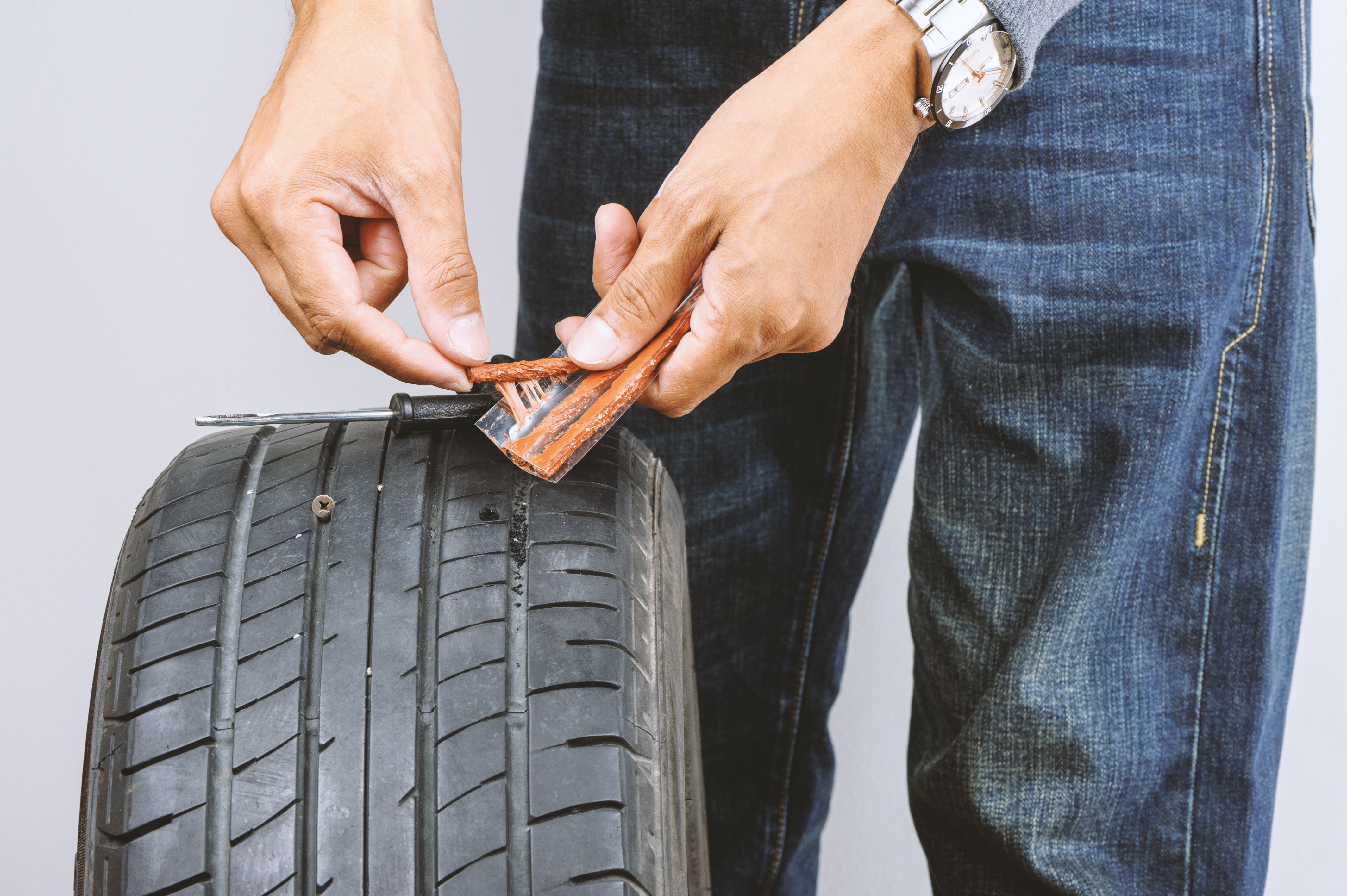No matter how much work and care you put into maintaining your vehicle, there’s always going to be a caveat—you may know what’s under the hood, but you never really know what’s on the road.
The hazards of the road are many, and they come in all shapes and sizes. If you’re cautious, alert, and safe, you can avoid many pitfalls that you come across. But there will always be small, sharp objects that can slow you down and cause damage to your tires.

That damage isn’t always the end of the line for your tire, though. Under the right circumstances, a patch or a plug can give your tire new life and get your back on the road, saving you time and the cost of a brand new tire.
Here are three questions to ask when evaluating whether or not your tire needs to be patched.
How quickly can you address the problem?
Like many maintenance concerns with your vehicle, timing is everything with a deflated tire. But in this case, your timing needs to be immediate if at all possible.
Standard tires should never be driven while low on air, especially if they’re all the way flat. This will cause scuffing to the tire’s inboard and outboard sidewalls, which could lead to having to replace the tire completely rather than patching or plugging the leak.
What kind of damage, and how big is it?
The next thing you need to find out is whether you’re dealing with a cut or a puncture.
If it’s a cut, you’re going to need a new tire unless the cut is ¼ of an inch or less. This is because cuts can sever the steel cords within the tire, which give the tires their strength. Patching a cut of this caliber would prevent an air leak, but it wouldn’t restore the tire’s strength.

If you’re dealing with a puncture, though, you may be in luck. Tire patches are designed to repair round holes, after all. Again, ¼ of an inch or less is the sweet spot for repairs; anything over that size in diameter is too big of a puncture.
Where is the damage located on the tire?
Size isn’t all that matters for repairing a puncture, though. You’ll also need to make sure the damage is within a specific area on the tread face of the tire, between the outer grooves (no closer than two inches of the sidewall, if your tire doesn’t have circumferential grooves).
If the puncture is on the sidewall of the tire, you’ll need a replacement. The sidewall of the tire flexes often while you drive, and one flex too many will loosen the patch. The same logic goes for the shoulder, which flexes the most of any part of the tire.
If your tire meets these requirements, congratulations, you may save a trip to the mechanic and a few bucks. If you are patching the tire yourself, though, you will have to de-mount the tire from the rim so you can see the inside of the tire as you repair it. And remember, you should always follow your kit instructions.
(Note: Because tires are the single points of contact to the highway and having issues can cause detrimental results if not corrected soon and properly, we recommend letting a tire specialist inspect your tire if you are unsure of the magnitude of the damage or the best way to fix it.)
- Always take appropriate safety precautions when working on or operating your vehicle. Take the necessary steps to help prevent injuries; always use protective gear like helmets, safety goggles, and gloves.

